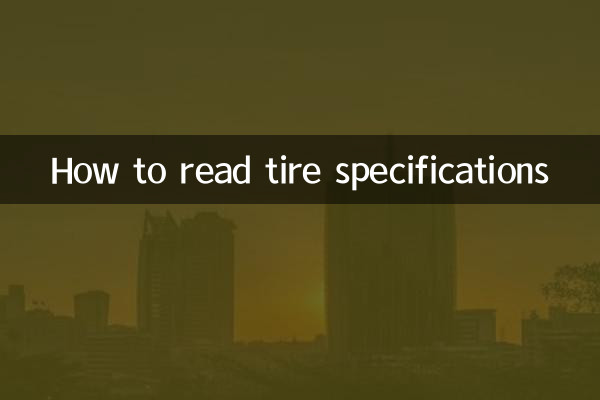How to read tire specifications
Tires are the only parts of a vehicle that are in contact with the ground, and the choice of their specifications directly affects driving safety and driving experience. However, many car owners do not understand the meaning of tire specifications, making it easy to make mistakes when purchasing. This article will introduce in detail how to interpret tire specifications, and attach the hot topics and hot content on the Internet in the past 10 days to help you better understand tire specifications.
1. Basic structure of tire specifications

Tire specifications usually consist of a series of numbers and letters, such as "205/55 R16 91V." These characters represent the tire's width, aspect ratio, construction type, wheel diameter, load index and speed rating. The following is a detailed analysis:
| character | meaning | Example (205/55 R16 91V) |
|---|---|---|
| 205 | Tire width (mm) | Tire section width is 205 mm |
| 55 | Flatness ratio (%) | Tire height is 55% of width |
| R | Structure type | Radial tires (Radial) |
| 16 | Hub diameter (inches) | Suitable for 16-inch wheels |
| 91 | load index | Maximum load capacity is 615kg |
| V | Speed level | Top speed is 240 km/h |
2. How to choose tire specifications according to the vehicle
When selecting tire specifications, refer to the vehicle owner's manual or the original tire labeling. Here are examples of tire specifications for some common car models:
| car model | Common tire specifications |
|---|---|
| Toyota Corolla | 195/65 R15 91H |
| Honda Civic | 215/55 R16 93V |
| Volkswagen Golf | 225/45 R17 91W |
| BMW 3 Series | 225/50 R17 94Y |
3. Popular tire topics on the Internet in the past 10 days
The following are the recent hot topics and content about tires on the Internet for your reference:
| topic | heat index | Main content |
|---|---|---|
| Winter tire buying guide | ★★★★★ | The pattern design and material selection of winter tires are crucial to the grip on ice and snow roads. |
| Trends in special tires for electric vehicles | ★★★★☆ | Due to their heavy weight and high torque, electric vehicles have higher requirements on tire wear resistance and quietness. |
| The Importance of Tire Pressure Monitoring Systems (TPMS) | ★★★☆☆ | TPMS can monitor tire pressure in real time to avoid the risk of tire blowout caused by insufficient tire pressure. |
| Tire recycling and environmental protection | ★★★☆☆ | The recycling of waste tires has become a hot topic in the field of environmental protection. |
4. Frequently Asked Questions about Tire Specifications
1.Is wider tire width better?
Not so. Increased tire width will improve grip, but will also increase fuel consumption and noise. It needs to be selected according to vehicle performance and driving needs.
2.How does the flatness ratio affect driving?
Tires with a low aspect ratio have better handling but less comfort; the opposite is true for tires with a high aspect ratio.
3.How to tell if a tire needs to be replaced?
This can be determined by observing tire wear marks (TWI), checking for cracks or bulges, and age (usually 3-5 years).
5. Summary
Interpretation of tire specifications is essential knowledge for car owners. Correct selection of tires can not only improve driving safety, but also optimize the driving experience. I hope that through the detailed introduction and structured data of this article, you can easily master the method of viewing tire specifications and make informed decisions when purchasing.

check the details

check the details